How to write a poetry essay
- August 26, 2023
Whether you love literature or are just curious, this guide will help you understand, enjoy, and talk about poetry. So, let’s start exploring the world of lines and symbols, where each one tells a story to discover.
Here are the steps on writing a poetry essay.

Choose a poem
The first step is, of course, to choose a poem to write your essay .
It should be one that you find interesting, thought-provoking, or emotionally resonant. It’s important to select a poem that you can engage with and analyze effectively.
- Choose a poem that genuinely captures your interest. Look for poems that evoke emotions, thoughts, or curiosity when you read them.
- Consider the themes addressed in the poem. It should offer ample material for analysis.
When choosing a poem
So for this guide, let’s choose Emily Dickinson’s poem “Because I could not stop for Death.” You’ll see a short excerpt of this poem for your understanding.
Poem example for poetry essay
Because i couldn not stop for Death by Emily Dickinson
Because I could not stop for Death – He kindly stopped for me – The Carriage held but just Ourselves – And Immortality. We slowly drove – He knew no haste And I had put away My labor and my leisure too, For His Civility – We passed the School, where Children strove At Recess – in the Ring – We passed the Fields of Gazing Grain – We passed the Setting Sun – The poem continues....
This poem is intriguing due to its exploration of mortality, the afterlife, and eternity. The imagery and language in the poem provide ample material for analysis, making it a suitable choice for a comprehensive essay.
After carefully choosing the poem that interests you, understanding the poem is the biggest key to writing an effective and nice poetry essay.
Understand the poem
Reading the poem several times to grasp its meaning is the most important part of a good analysis. You must first analyze the structure, rhyme scheme , meter and literary tools used in the poem.
For a solid understanding, you should:
- Read the poem multiple times to familiarize yourself with its content. Each reading may reveal new insights.
- Identify the central themes or messages the poem conveys.
- Study the rhyme scheme and meter (rhythmic pattern) of the poem.
- Consider how the structure, including its stanzas, lines, and breaks, contributes to the poem's meaning and impact.
For example
Remember, understanding the poem thoroughly is the foundation for a well-informed analysis. Take your time to grasp the poem’s various elements before moving on to the next steps in your essay.
Now that we have a clear understanding of the poem, let’s move into writing the introduction.
Write a catchy introduction
- Begin with an attention-grabbing hook sentence that piques the reader's interest.
- Provide the necessary information about the poem and its author. Mention the poet's name and title of the poem.
- Offer some context about the poem's time period, literary movement, or cultural influences.
- Present your thesis statement , which outlines the main argument or focus of your essay.
Poetry essay introduction example
Introduction
Thesis statement for poetry essays
A thesis statement is a clear and concise sentence or two that presents the main argument or point of your essay . It provides a roadmap for your reader, outlining what they can expect to find in your essay.
In the case of a poetry essay, your thesis statement should capture the central message, themes, or techniques you’ll be discussing in relation to the poem.
Why is the thesis important for a poetry essay?
By reading your thesis statement, your audience should have a clear idea of what to expect from your poem analysis essay.
When creating a thesis statement, keep these in mind:
- Start by identifying the key elements of the poem that you want to discuss. These could be themes, literary devices, emotions conveyed, or the poet's intentions.
- Based on the key elements you've identified, formulate a central argument that encapsulates your main analysis. What is the poem trying to convey? What are you trying to say about the poem?
- Your thesis should be specific and focused. Avoid vague or broad statements. Instead, provide a clear direction for your analysis.
Poetry essasy thesis statement example
....(introduction starts) ....(introduction continues) ....(introduction continues) In "Because I could not stop for Death," Emily Dickinson employs vivid imagery, personification, and an unconventional perspective on mortality to explore the transcendence of death and the eternity of the soul. Thesis statement, which is usually the last sentence of your introduction
Analyze language and imagery
Language and image analysis in poetry involves a close examination of the words, phrases and literary devices used by the poet. In this step you must uncover the deeper layers of meaning, emotion and sensory experiences conveyed by the poet’s choice of language and imagery.
Why language and imagery?
- Start by identifying and listing the literary devices present in the poem. These could include metaphors, similes, personification, symbolism, alliteration, onomatopoeia, and more.
- For each identified device, explain its significance. How does it contribute to the poem's meaning, mood, or tone?
- Analyze how the literary devices interact with the context of the poem. How do they relate to the themes, characters, or situations presented in the poem?
- Discuss how the use of specific language and imagery influences the reader's emotional response and understanding of the poem.
Continuing with Emily Dickinson’s “Because I could not stop for Death,” let’s analyze the use of imagery:
Language and imagery analysis example
Lines chosen for analysis
Discuss themes in body paragraphs
Exploring themes helps you grasp the deeper meaning of the poem and connect it to broader human experiences. Understanding the themes allows you to uncover what the poet is attempting to convey and how the poem relates to readers on a universal level.
In this step, you will likely dedicate multiple body paragraphs to the analysis of various aspects of language and imagery. Each body paragraph should focus on a specific literary device, phrase, or aspect of language and imagery.
Here’s how you can structure the body paragraphs.
Poetry essay body paragraphs example
Body Paragraph 1: Identify and Explain Literary Devices
Body Paragraph 2: Context and Interaction with Themes
Body Paragraph 3: Reader's emotional response and understanding
Provide evidence from the poem
Providing evidence involves quoting specific lines or stanzas from the poem to support the points you’re making in your analysis. These quotes serve as concrete examples that demonstrate how the poet uses language, imagery, or literary devices to convey specific meanings or emotions.
- Select lines or stanzas from the poem that directly relate to the point you're making in your analysis.
- Introduce each quote with context, explaining the significance of the lines and how they contribute to your analysis.
- Use quotation marks to indicate that you're using the poet's language.
- After providing the quote, interpret its meaning. Explain how the language, imagery, or devices used in the quoted lines contribute to your analysis.
Providing evidence example
In your essay, you should include several quotes and interpret them to reinforce your points. Quoting specific lines from the poem allows you to showcase the poet’s language while demonstrating how these lines contribute to the poem’s overall expression.
Write a conclusion
Conclusion paragraph is the last sentence of your poem analysis essay. It reinforces your thesis statement and emphasizes your insights.
Additionally, the conclusion offers a chance to provide a final thought that leaves a lasting impression on the reader. In your conclusion, make sure to:
- Start by rephrasing your thesis statement. Remind the reader of the main argument you've made in your essay.
- Provide a concise summary of the main points. Avoid introducing new information; focus on the key ideas.
- Discuss the broader significance or implications. How does the poem's message relate to readers beyond its specific context?
- End with a thoughtful reflection, observation, or question that leaves the reader with something to ponder.
Poetry essay conclusion example
In your essay, the conclusion serves as a final opportunity to leave a strong impression on the reader by summarizing your analysis and offering insights into the poem’s broader significance.
Now, it’s time to double check what you’ve written.
Proofread and revise your essay
Edit your essay for clarity, coherence, tense selection , correct headings , etc. Ensure that your ideas flow logically and your analysis is well-supported. Remember, a poetry essay is an opportunity to delve into the nuances of a poem’s language, themes, and emotions.
- Review each paragraph to ensure ideas flow logically from one to the next.
- Check for grammar and punctuation errors.
- Verify that your evidence from the poem is accurately quoted and explained.
- Make sure your language is clear and effectively conveys your analysis.
By proofreading and revising, you can refine your essay, improving its readability and ensuring that your insights are communicated accurately.
So this was the last part, you’re now ready to write your first poem analysis (poetry) essay.
Frequently Asked Questions
What should i include in the introduction of a poetry essay.
In the introduction, provide background information about the poem and poet. Include the poem’s title, publication date, and any relevant context that helps readers understand its significance.
Can I include my emotional responses in a poetry essay?
Yes, you can discuss your emotional responses, but ensure they are supported by your analysis of the poem’s literary elements. Avoid focusing solely on personal feelings.
Is it important to understand the poet's background when writing a poetry essay?
While it can provide context, your focus should be on analyzing the poem itself. If the poet’s background is relevant to the poem’s interpretation, mention it briefly.
What's the best way to conclude a poetry essay?
In the conclusion, summarize your main points and tie them together. Offer insights into the poem’s broader significance, implications, or lasting impact.
Recently on Tamara Blog
How to write a discussion essay (with steps & examples), writing a great poetry essay (steps & examples), how to write a process essay (steps & examples), writing a common app essay (steps & examples), how to write a synthesis essay (steps & examples), how to write a horror story.

To learn how to write a poem step-by-step, let’s start where all poets start: the basics.
This article is an in-depth introduction to how to write a poem. We first answer the question, “What is poetry?” We then discuss the literary elements of poetry, and showcase some different approaches to the writing process—including our own seven-step process on how to write a poem step by step.
So, how do you write a poem? Let’s start with what poetry is.
What Poetry Is
It’s important to know what poetry is—and isn’t—before we discuss how to write a poem. The following quote defines poetry nicely:
“Poetry is language at its most distilled and most powerful.” —Former US Poet Laureate Rita Dove
Poetry Conveys Feeling
People sometimes imagine poetry as stuffy, abstract, and difficult to understand. Some poetry may be this way, but in reality poetry isn’t about being obscure or confusing. Poetry is a lyrical, emotive method of self-expression, using the elements of poetry to highlight feelings and ideas.
A poem should make the reader feel something.
In other words, a poem should make the reader feel something—not by telling them what to feel, but by evoking feeling directly.
Here’s a contemporary poem that, despite its simplicity (or perhaps because of its simplicity), conveys heartfelt emotion.
Poetry is Language at its Richest and Most Condensed
Unlike longer prose writing (such as a short story, memoir, or novel), poetry needs to impact the reader in the richest and most condensed way possible. Here’s a famous quote that enforces that distinction:
“Prose: words in their best order; poetry: the best words in the best order.” —Samuel Taylor Coleridge
So poetry isn’t the place to be filling in long backstories or doing leisurely scene-setting. In poetry, every single word carries maximum impact.
Poetry Uses Unique Elements
Poetry is not like other kinds of writing: it has its own unique forms, tools, and principles. Together, these elements of poetry help it to powerfully impact the reader in only a few words.
The elements of poetry help it to powerfully impact the reader in only a few words.
Most poetry is written in verse , rather than prose . This means that it uses line breaks, alongside rhythm or meter, to convey something to the reader. Rather than letting the text break at the end of the page (as prose does), verse emphasizes language through line breaks.
Poetry further accentuates its use of language through rhyme and meter. Poetry has a heightened emphasis on the musicality of language itself: its sounds and rhythms, and the feelings they carry.
These devices—rhyme, meter, and line breaks—are just a few of the essential elements of poetry, which we’ll explore in more depth now.
Understanding the Elements of Poetry
As we explore how to write a poem step by step, these three major literary elements of poetry should sit in the back of your mind:
- Rhythm (Sound, Rhyme, and Meter)
- Literary Devices
1. Elements of Poetry: Rhythm
“Rhythm” refers to the lyrical, sonic qualities of the poem. How does the poem move and breathe; how does it feel on the tongue?
Traditionally, poets relied on rhyme and meter to accomplish a rhythmically sound poem. Free verse poems—which are poems that don’t require a specific length, rhyme scheme, or meter—only became popular in the West in the 20th century, so while rhyme and meter aren’t requirements of modern poetry, they are required of certain poetry forms.
Poetry is capable of evoking certain emotions based solely on the sounds it uses. Words can sound sinister, percussive, fluid, cheerful, dour, or any other noise/emotion in the complex tapestry of human feeling.
Take, for example, this excerpt from the poem “Beat! Beat! Drums!” by Walt Whitman:

Red — “b” sounds
Blue — “th” sounds
Green — “w” and “ew” sounds
Purple — “s” sounds
Orange — “d” and “t” sounds
This poem has a lot of percussive, disruptive sounds that reinforce the beating of the drums. The “b,” “d,” “w,” and “t” sounds resemble these drum beats, while the “th” and “s” sounds are sneakier, penetrating a deeper part of the ear. The cacophony of this excerpt might not sound “lyrical,” but it does manage to command your attention, much like drums beating through a city might sound.
To learn more about consonance and assonance, euphony and cacophony, and the other uses of sound, take a look at our article “12 Literary Devices in Poetry.”
https://writers.com/literary-devices-in-poetry
It would be a crime if you weren’t primed on the ins and outs of rhymes. “Rhyme” refers to words that have similar pronunciations, like this set of words: sound, hound, browned, pound, found, around.
Many poets assume that their poetry has to rhyme, and it’s true that some poems require a complex rhyme scheme. However, rhyme isn’t nearly as important to poetry as it used to be. Most traditional poetry forms—sonnets, villanelles , rimes royal, etc.—rely on rhyme, but contemporary poetry has largely strayed from the strict rhyme schemes of yesterday.
There are three types of rhymes:
- Homophony: Homophones are words that are spelled differently but sound the same, like “tail” and “tale.” Homophones often lead to commonly misspelled words .
- Perfect Rhyme: Perfect rhymes are word pairs that are identical in sound except for one minor difference. Examples include “slant and pant,” “great and fate,” and “shower and power.”
- Slant Rhyme: Slant rhymes are word pairs that use the same sounds, but their final vowels have different pronunciations. For example, “abut” and “about” are nearly-identical in sound, but are pronounced differently enough that they don’t completely rhyme. This is also known as an oblique rhyme or imperfect rhyme.
Meter refers to the stress patterns of words. Certain poetry forms require that the words in the poem follow a certain stress pattern, meaning some syllables are stressed and others are unstressed.
What is “stressed” and “unstressed”? A stressed syllable is the sound that you emphasize in a word. The bolded syllables in the following words are stressed, and the unbolded syllables are unstressed:
- Un• stressed
- Plat• i• tud• i•nous
- De •act•i• vate
- Con• sti •tu• tion•al
The pattern of stressed and unstressed syllables is important to traditional poetry forms. This chart, copied from our article on form in poetry , summarizes the different stress patterns of poetry.
2. Elements of Poetry: Form
“Form” refers to the structure of the poem. Is the poem a sonnet, a villanelle, a free verse piece, a slam poem, a contrapuntal, a ghazal , a blackout poem , or something new and experimental?
Form also refers to the line breaks and stanza breaks in a poem. Unlike prose, where the end of the page decides the line breaks, poets have control over when one line ends and a new one begins. The words that begin and end each line will emphasize the sounds, images, and ideas that are important to the poet.
To learn more about rhyme, meter, and poetry forms, read our full article on the topic:
https://writers.com/what-is-form-in-poetry
3. Elements of Poetry: Literary Devices
“Poetry: the best words in the best order.” — Samuel Taylor Coleridge
How does poetry express complex ideas in concise, lyrical language? Literary devices—like metaphor, symbolism, juxtaposition, irony, and hyperbole—help make poetry possible. Learn how to write and master these devices here:
https://writers.com/common-literary-devices
How to Write a Poem, in 7 Steps
To condense the elements of poetry into an actual poem, we’re going to follow a seven-step approach. However, it’s important to know that every poet’s process is different. While the steps presented here are a logical path to get from idea to finished poem, they’re not the only tried-and-true method of poetry writing. Poets can—and should!—modify these steps and generate their own writing process.
Nonetheless, if you’re new to writing poetry or want to explore a different writing process, try your hand at our approach. Here’s how to write a poem step by step!
1. Devise a Topic
The easiest way to start writing a poem is to begin with a topic.
However, devising a topic is often the hardest part. What should your poem be about? And where can you find ideas?
Here are a few places to search for inspiration:
- Other Works of Literature: Poetry doesn’t exist in a vacuum—it’s part of a larger literary tapestry, and can absolutely be influenced by other works. For example, read “The Golden Shovel” by Terrance Hayes , a poem that was inspired by Gwendolyn Brooks’ “We Real Cool.”
- Real-World Events: Poetry, especially contemporary poetry, has the power to convey new and transformative ideas about the world. Take the poem “A Cigarette” by Ilya Kaminsky , which finds community in a warzone like the eye of a hurricane.
- Your Life: What would poetry be if not a form of memoir? Many contemporary poets have documented their lives in verse. Take Sylvia Plath’s poem “Full Fathom Five” —a daring poem for its time, as few writers so boldly criticized their family as Plath did.
- The Everyday and Mundane: Poetry isn’t just about big, earth-shattering events: much can be said about mundane events, too. Take “Ode to Shea Butter” by Angel Nafis , a poem that celebrates the beautiful “everydayness” of moisturizing.
- Nature: The Earth has always been a source of inspiration for poets, both today and in antiquity. Take “Wild Geese” by Mary Oliver , which finds meaning in nature’s quiet rituals.
- Writing Exercises: Prompts and exercises can help spark your creativity, even if the poem you write has nothing to do with the prompt! Here’s 24 writing exercises to get you started.
At this point, you’ve got a topic for your poem. Maybe it’s a topic you’re passionate about, and the words pour from your pen and align themselves into a perfect sonnet! It’s not impossible—most poets have a couple of poems that seemed to write themselves.
However, it’s far more likely you’re searching for the words to talk about this topic. This is where journaling comes in.
Sit in front of a blank piece of paper, with nothing but the topic written on the top. Set a timer for 15-30 minutes and put down all of your thoughts related to the topic. Don’t stop and think for too long, and try not to obsess over finding the right words: what matters here is emotion, the way your subconscious grapples with the topic.
At the end of this journaling session, go back through everything you wrote, and highlight whatever seems important to you: well-written phrases, poignant moments of emotion, even specific words that you want to use in your poem.
Journaling is a low-risk way of exploring your topic without feeling pressured to make it sound poetic. “Sounding poetic” will only leave you with empty language: your journal allows you to speak from the heart. Everything you need for your poem is already inside of you, the journaling process just helps bring it out!
3. Think About Form
As one of the elements of poetry, form plays a crucial role in how the poem is both written and read. Have you ever wanted to write a sestina ? How about a contrapuntal, or a double cinquain, or a series of tanka? Your poem can take a multitude of forms, including the beautifully unstructured free verse form; while form can be decided in the editing process, it doesn’t hurt to think about it now.
4. Write the First Line
After a productive journaling session, you’ll be much more acquainted with the state of your heart. You might have a line in your journal that you really want to begin with, or you might want to start fresh and refer back to your journal when you need to! Either way, it’s time to begin.
What should the first line of your poem be? There’s no strict rule here—you don’t have to start your poem with a certain image or literary device. However, here’s a few ways that poets often begin their work:
- Set the Scene: Poetry can tell stories just like prose does. Anne Carson does just this in her poem “Lines,” situating the scene in a conversation with the speaker’s mother.
- Start at the Conflict: Right away, tell the reader where it hurts most. Margaret Atwood does this in “Ghost Cat,” a poem about aging.
- Start With a Contradiction: Juxtaposition and contrast are two powerful tools in the poet’s toolkit. Joan Larkin’s poem “Want” begins and ends with these devices. Carlos Gimenez Smith also begins his poem “Entanglement” with a juxtaposition.
- Start With Your Title: Some poets will use the title as their first line, like Ron Padgett’s poem “Ladies and Gentlemen in Outer Space.”
There are many other ways to begin poems, so play around with different literary devices, and when you’re stuck, turn to other poetry for inspiration.
5. Develop Ideas and Devices
You might not know where your poem is going until you finish writing it. In the meantime, stick to your literary devices. Avoid using too many abstract nouns, develop striking images, use metaphors and similes to strike interesting comparisons, and above all, speak from the heart.
6. Write the Closing Line
Some poems end “full circle,” meaning that the images the poet used in the beginning are reintroduced at the end. Gwendolyn Brooks does this in her poem “my dreams, my work, must wait till after hell.”
Yet, many poets don’t realize what their poems are about until they write the ending line . Poetry is a search for truth, especially the hard truths that aren’t easily explained in casual speech. Your poem, too, might not be finished until it comes across a necessary truth, so write until you strike the heart of what you feel, and the poem will come to its own conclusion.
7. Edit, Edit, Edit!
Do you have a working first draft of your poem? Congratulations! Getting your feelings onto the page is a feat in itself.
Yet, no guide on how to write a poem is complete without a note on editing. If you plan on sharing or publishing your work, or if you simply want to edit your poem to near-perfection, keep these tips in mind.
- Adjectives and Adverbs: Use these parts of speech sparingly. Most imagery shouldn’t rely on adjectives and adverbs, because the image should be striking and vivid on its own, without too much help from excess language.
- Concrete Line Breaks: Line breaks help emphasize important words, making certain images and ideas clearer to the reader. As a general rule, most of your lines should start and end with concrete words—nouns and verbs especially.
- Stanza Breaks: Stanzas are like paragraphs to poetry. A stanza can develop a new idea, contrast an existing idea, or signal a transition in the poem’s tone. Make sure each stanza clearly stands for something as a unit of the poem.
- Mixed Metaphors: A mixed metaphor is when two metaphors occupy the same idea, making the poem unnecessarily difficult to understand. Here’s an example of a mixed metaphor: “a watched clock never boils.” The meaning can be discerned, but the image remains unclear. Be wary of mixed metaphors—though some poets (like Shakespeare) make them work, they’re tricky and often disruptive.
- Abstractions: Above all, avoid using excessively abstract language. It’s fine to use the word “love” 2 or 3 times in a poem, but don’t use it twice in every stanza. Let the imagery in your poem express your feelings and ideas, and only use abstractions as brief connective tissue in otherwise-concrete writing.
Lastly, don’t feel pressured to “do something” with your poem. Not all poems need to be shared and edited. Poetry doesn’t have to be “good,” either—it can simply be a statement of emotions by the poet, for the poet. Publishing is an admirable goal, but also, give yourself permission to write bad poems, unedited poems, abstract poems, and poems with an audience of one. Write for yourself—editing is for the other readers.
How to Write a Poem: Different Approaches and Philosophies
Poetry is the oldest literary form, pre-dating prose, theater, and the written word itself. As such, there are many different schools of thought when it comes to writing poetry. You might be wondering how to write a poem through different methods and approaches: here’s four philosophies to get you started.
How to Write a Poem: Poetry as Emotion
If you asked a Romantic Poet “what is poetry?”, they would tell you that poetry is the spontaneous emotion of the soul.
The Romantic Era viewed poetry as an extension of human emotion—a way of perceiving the world through unbridled creativity, centered around the human soul. While many Romantic poets used traditional forms in their poetry, the Romantics weren’t afraid to break from tradition, either.
To write like a Romantic, feel—and feel intensely. The words will follow the emotions, as long as a blank page sits in front of you.
How to Write a Poem: Poetry as Stream of Consciousness
If you asked a Modernist poet, “What is poetry?” they would tell you that poetry is the search for complex truths.
Modernist Poets were keen on the use of poetry as a window into the mind. A common technique of the time was “Stream of Consciousness,” which is unfiltered writing that flows directly from the poet’s inner dialogue. By tapping into one’s subconscious, the poet might uncover deeper truths and emotions they were initially unaware of.
Depending on who you are as a writer, Stream of Consciousness can be tricky to master, but this guide covers the basics of how to write using this technique.
How to Write a Poem: Mindfulness
Mindfulness is a practice of documenting the mind, rather than trying to control or edit what it produces. This practice was popularized by the Beat Poets , who in turn were inspired by Eastern philosophies and Buddhist teachings. If you asked a Beat Poet “what is poetry?”, they would tell you that poetry is the human consciousness, unadulterated.
To learn more about the art of leaving your mind alone , take a look at our guide on Mindfulness, from instructor Marc Olmsted.
https://writers.com/mindful-writing
How to Write a Poem: Poem as Camera Lens
Many contemporary poets use poetry as a camera lens, documenting global events and commenting on both politics and injustice. If you find yourself itching to write poetry about the modern day, press your thumb against the pulse of the world and write what you feel.
Additionally, check out these two essays by Electric Literature on the politics of poetry:
- What Can Poetry Do That Politics Can’t?
- Why All Poems Are Political (TL;DR: Poetry is an urgent expression of freedom).
Okay, I Know How to Write a Good Poem. What Next?
Poetry, like all art forms, takes practice and dedication. You might write a poem you enjoy now, and think it’s awfully written 3 years from now; you might also write some of your best work after reading this guide. Poetry is fickle, but the pen lasts forever, so write poems as long as you can!
Once you understand how to write a poem, and after you’ve drafted some pieces that you’re proud of and ready to share, here are some next steps you can take.
Publish in Literary Journals
Want to see your name in print? These literary journals house some of the best poetry being published today.
https://writers.com/best-places-submit-poetry-online
Assemble and Publish a Manuscript
A poem can tell a story. So can a collection of poems. If you’re interested in publishing a poetry book, learn how to compose and format one here:
https://writers.com/poetry-manuscript-format

Join a Writing Community
writers.com is an online community of writers, and we’d love it if you shared your poetry with us! Join us on Facebook and check out our upcoming poetry courses .
Poetry doesn’t exist in a vacuum, it exists to educate and uplift society. The world is waiting for your voice, so find a group and share your work!
Sean Glatch
27 comments.
super useful! love these articles 💕
Indeed, very helpful, consize. I could not say more than thank you.
I’ve never read a better guide on how to write poetry step by step. Not only does it give great tips, but it also provides helpful links! Thank you so much.
Thank you very much, Hamna! I’m so glad this guide was helpful for you.
Best guide so far
Very inspirational and marvelous tips
Thank you super tips very helpful.
I have never gone through the steps of writing poetry like this, I will take a closer look at your post.
Beautiful! Thank you! I’m really excited to try journaling as a starter step x
[…] How to Write a Poem, Step-by-Step […]
This is really helpful, thanks so much
Extremely thorough! Nice job.
Thank you so much for sharing your awesome tips for beginner writers!
People must reboot this and bookmark it. Your writing and explanation is detailed to the core. Thanks for helping me understand different poetic elements. While reading, actually, I start thinking about how my husband construct his songs and why other artists lack that organization (or desire to be better). Anyway, this gave me clarity.
I’m starting to use poetry as an outlet for my blogs, but I also have to keep in mind I’m transitioning from a blogger to a poetic sweet kitty potato (ha). It’s a unique transition, but I’m so used to writing a lot, it’s strange to see an open blog post with a lot of lines and few paragraphs.
Anyway, thanks again!
I’m happy this article was so helpful, Eternity! Thanks for commenting, and best of luck with your poetry blog.
Yours in verse, Sean
One of the best articles I read on how to write poems. And it is totally step by step process which is easy to read and understand.
Thanks for the step step explanation in how to write poems it’s a very helpful to me and also for everyone one. THANKYOU
Totally detailed and in a simple language told the best way how to write poems. It is a guide that one should read and follow. It gives the detailed guidance about how to write poems. One of the best articles written on how to write poems.
what a guidance thank you so much now i can write a poem thank you again again and again
The most inspirational and informative article I have ever read in the 21st century.It gives the most relevent,practical, comprehensive and effective insights and guides to aspiring writers.
Thank you so much. This is so useful to me a poetry
[…] Write a short story/poem (Here are some tips) […]
It was very helpful and am willing to try it out for my writing Thanks ❤️
Thank you so much. This is so helpful to me, and am willing to try it out for my writing .
Absolutely constructive, direct, and so useful as I’m striving to develop a recent piece. Thank you!
thank you for your explanation……,love it
Really great. Nothing less.
Leave a Comment Cancel Reply
Save my name, email, and website in this browser for the next time I comment.
Poems & Essays
- Poetry in Motion NYC

Stopping By
In this interview series, we ask writers, musicians, curators, and innovators to reflect on influence, memory, language, shared spaces, and the power of poetry to bring us together.
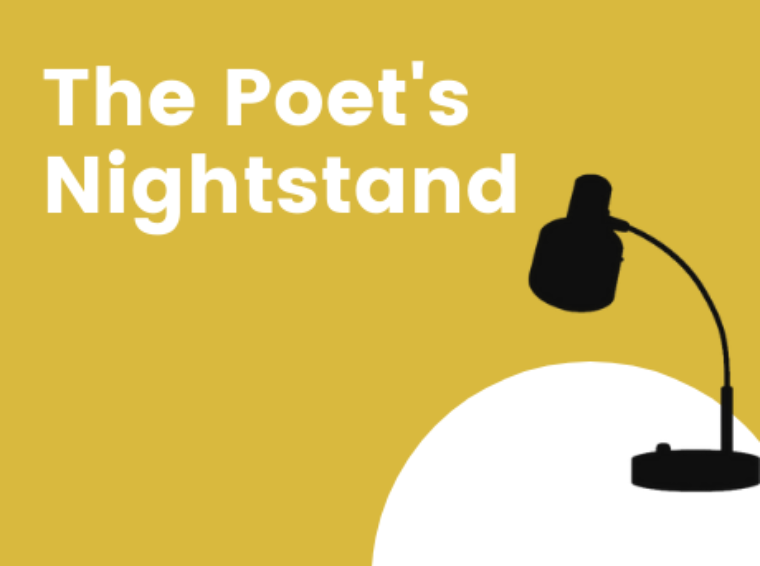
The Poet’s Nightstand
Poets talk about five books that have made a big impression on them recently.
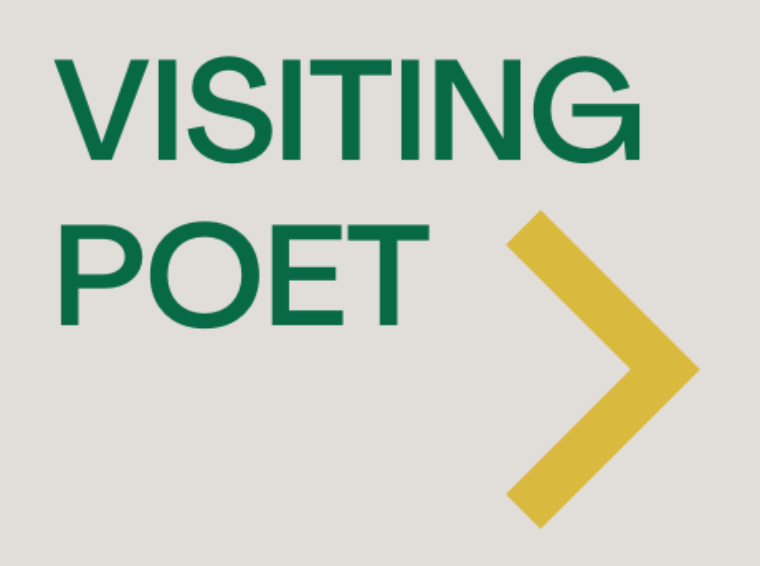
Visiting Poet
In this series, we introduce readers to poets from around the world through a selection of poems and a brief essay on their life and work.

In Their Own Words
Poets and translators on their work.
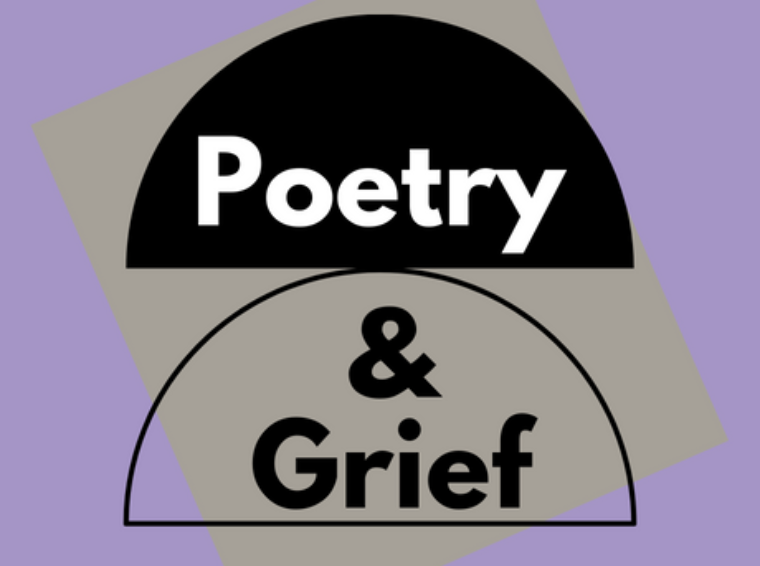
Poetry & Grief
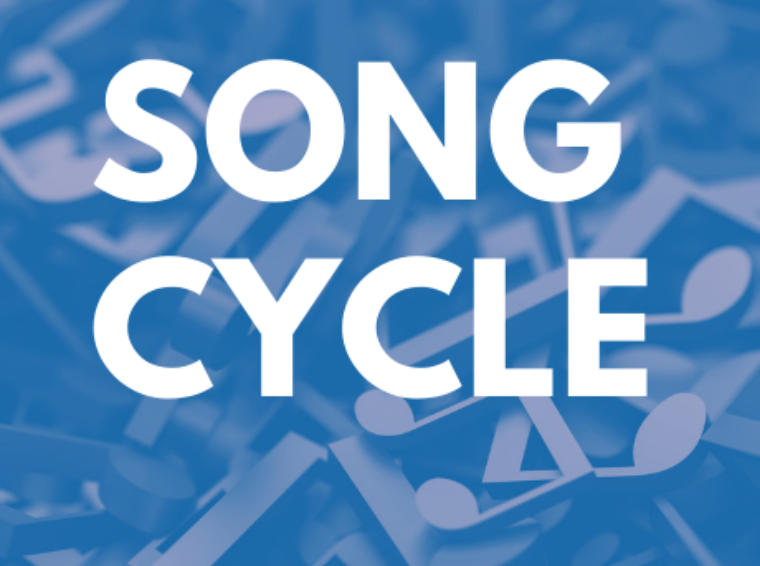
Poets, writers, and musicians trace the long relationship between poetry and music.

First Loves, Remembered
Poets reflect on the poems that first captured their imaginations.
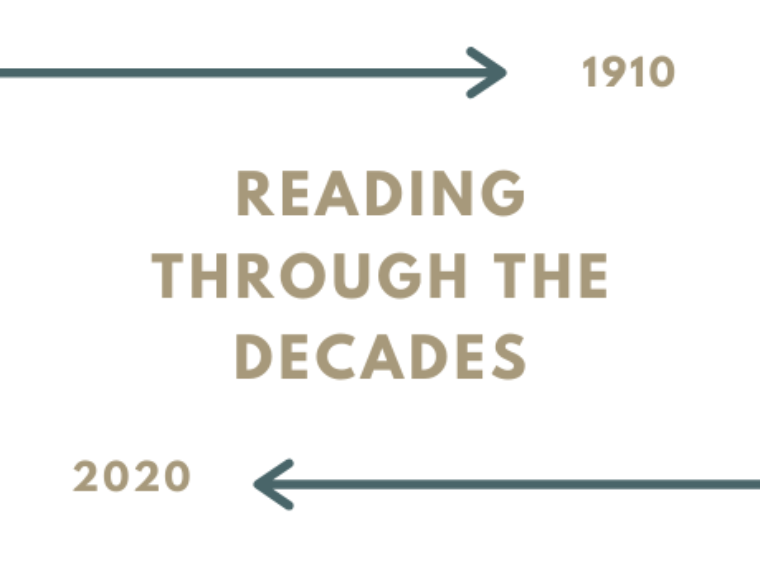
Reading Through The Decades
The Poetry Society of America celebrates its 110th Anniversary, and to mark the occasion, we have invited 11 acclaimed poets to help us create Reading Through the Decades , a video survey of American poetry over the past 110 years.
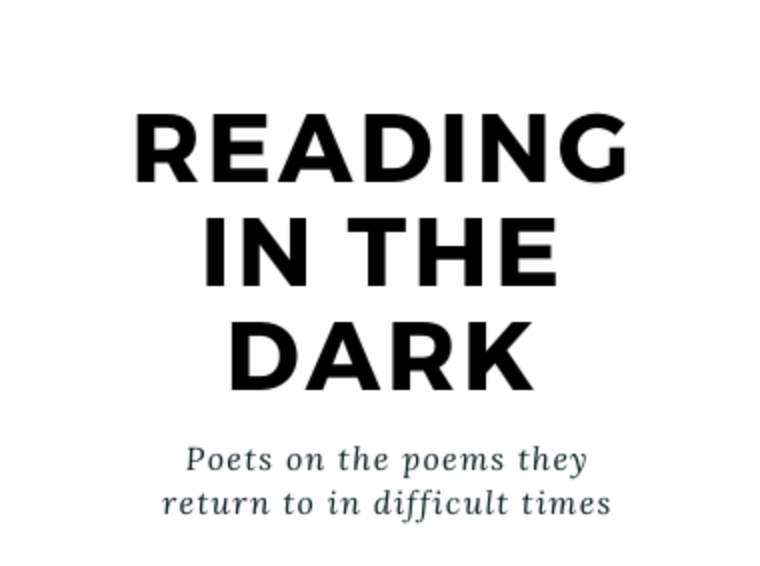
Reading in the Dark
Poets reflect on the poems they return to in difficult times.
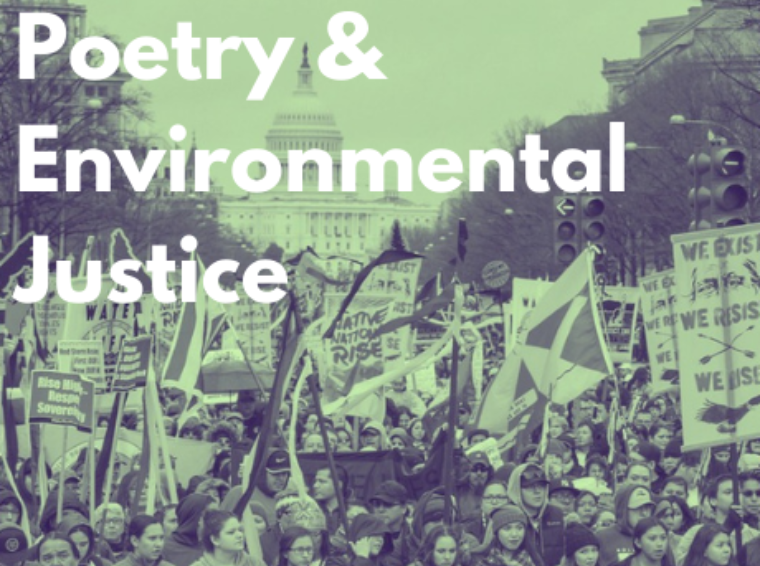
Poetry & Environmental Justice
The Poetry Society of America and Greenpeace USA invited eight poets to reflect on a poem that has shaped their understanding of environmental justice, including how it feels to live through the climate crisis, the lived experience of communities in harm’s way, or the power structures that reinforce environmental inequality.
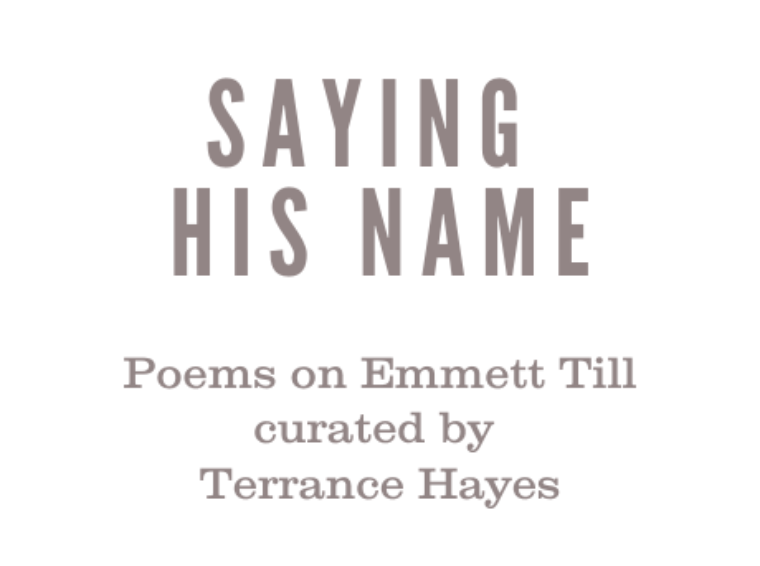
Saying His Name
Terrance Hayes explores how Emmett Till has become a haunting, powerful figure in Black poetry.
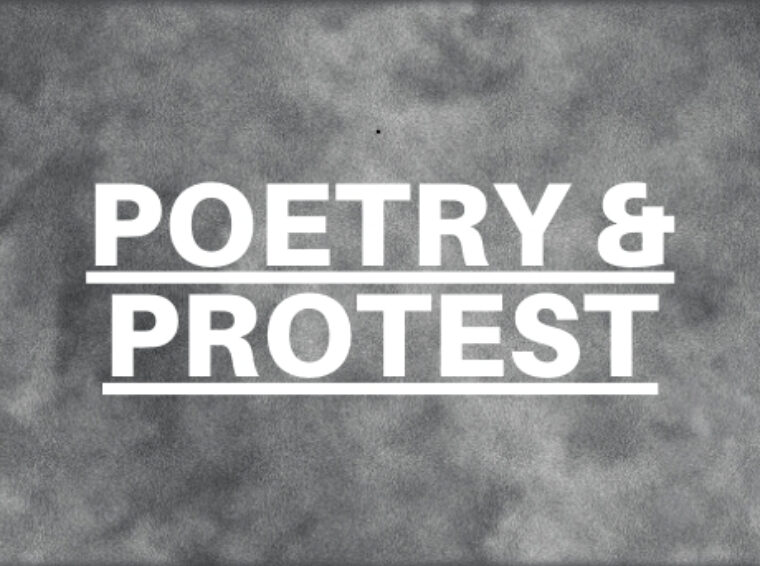
Poetry & Protest
Curated reading lists presented as part of the Poetry Coalition's annual theme.

Poetry & Democracy
Essays and poems on democracy, presented as part of the Poetry Coalition's annual theme.

Conversations with poets, editors, and artists.

Remembrances, appreciations, and remarks.

Latinx-Caribbean Poetry
Poems and notes by participants in the 2017 Latinx-Caribbean Poetry Conference. Co-presented with the Gallatin Writing Program and CantoMundo.

Latino/a Poets Roundtable
Discussions on Latinx poetry in the 21st Century.

New American Poets
Work from first first books by some of today's most innovative and interesting poets. This series was presented biannually from 2003-2015.
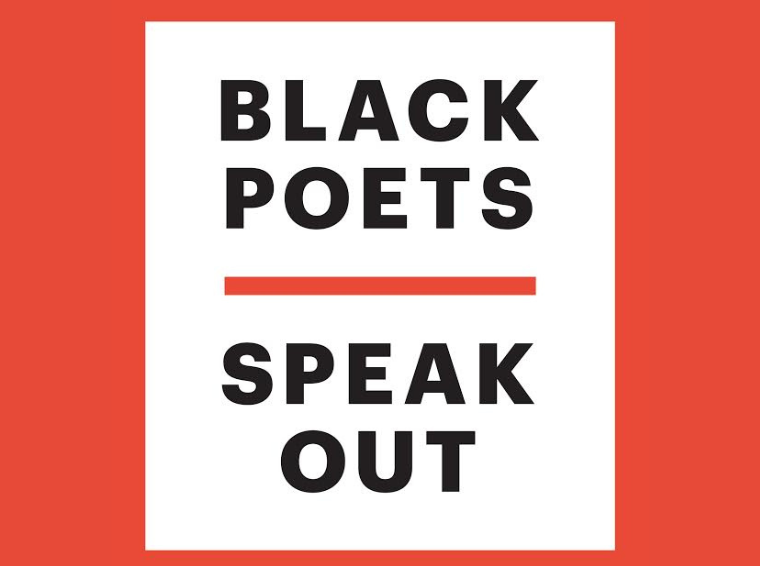
Black Poets Speak Out
Poets, activists, educators, and organizers on the #blackpoetsspeakout project.
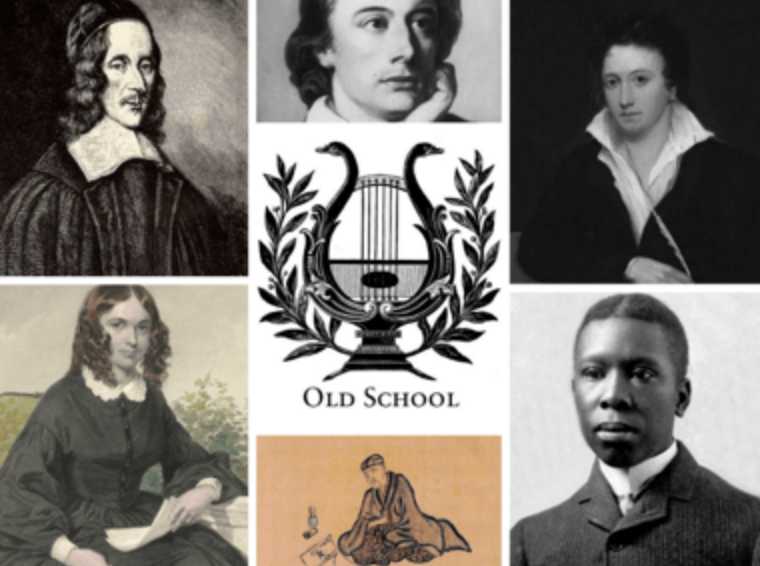
Poets on poets and poems from the past.

Site Visits
Interviews with poetry editors of online publications.
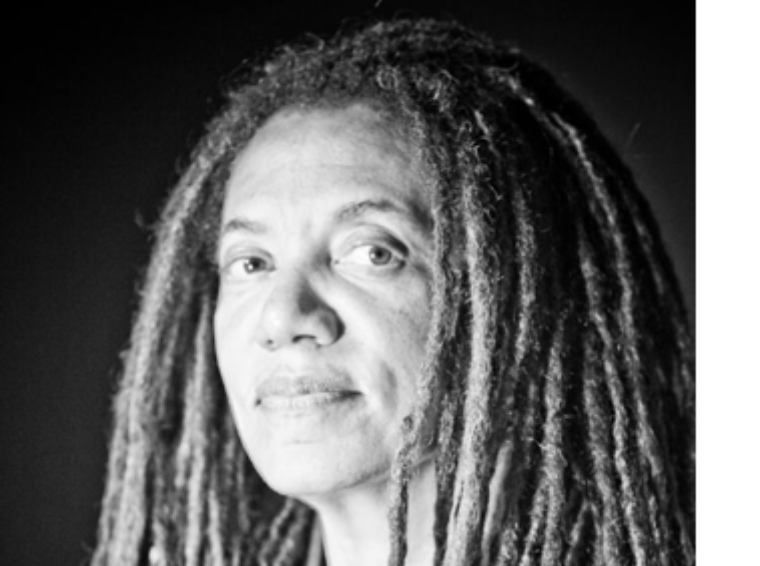
Ars Poetica
Rachel Eliza Griffiths' photographs of poets accompanied by a poem.

Thematic essays on beauty, politics, poetic forms, and more.
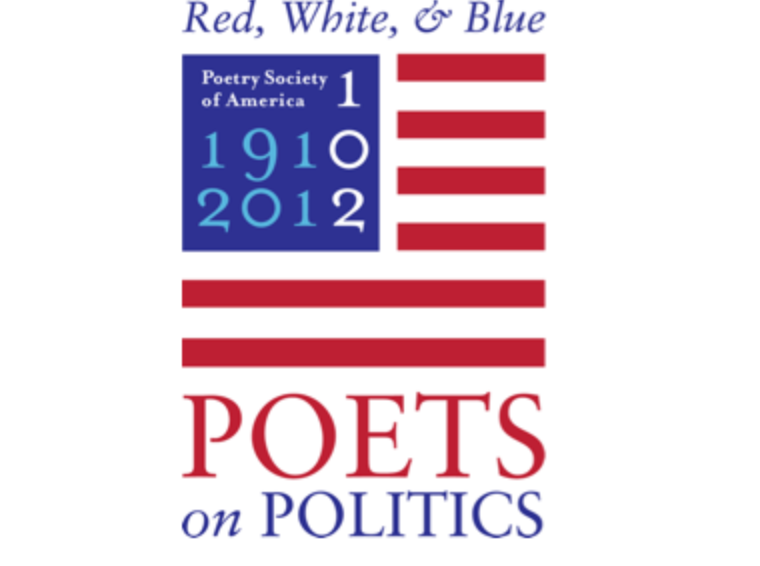
Red, White, & Blue
Poets on poetry's role in the political landscape.

First Loves
Poets on the first poems they adored. Edited by Carmela Ciuraru, and expanded into her anthology First Loves: Poets Introduce the Essential Poems that Captivated and Inspired Them .
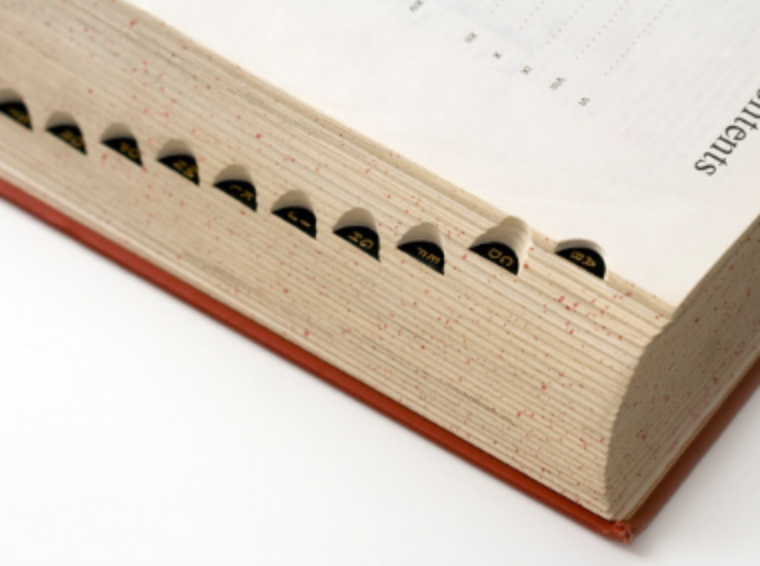
Poets on their favorite word. Essays selected from the anthology One Word , edited by Molly McQuade.

Q & A: American Poetry
Poets answer the question: "What's American about American Poetry?"
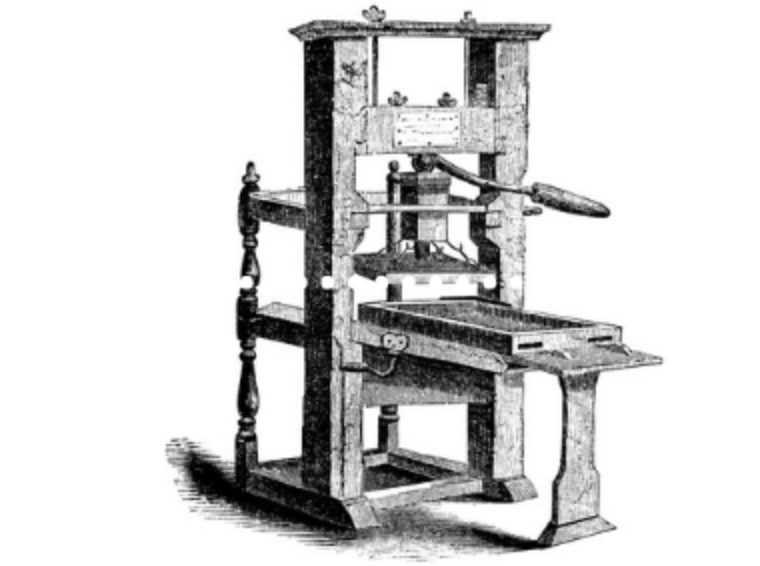
Q & A: Chapbook Publishers
Publishers, printers, and editors discuss their process.

Remembering Katrina
Poems in response to Hurricane Katrina.
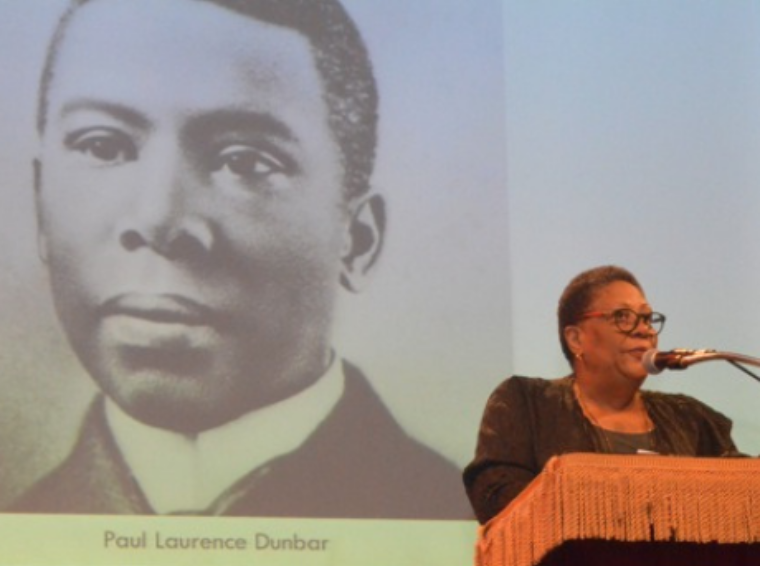
Yet Do I Marvel
Poets on the history and current state of African-American poetry.

Archival recordings from the Poetry Society of America events
A Full Guide to Writing a Perfect Poem Analysis Essay
01 October, 2020
14 minutes read
Author: Elizabeth Brown
Poem analysis is one of the most complicated essay types. It requires the utmost creativity and dedication. Even those who regularly attend a literary class and have enough experience in poem analysis essay elaboration may face considerable difficulties while dealing with the particular poem. The given article aims to provide the detailed guidelines on how to write a poem analysis, elucidate the main principles of writing the essay of the given type, and share with you the handy tips that will help you get the highest score for your poetry analysis. In addition to developing analysis skills, you would be able to take advantage of the poetry analysis essay example to base your poetry analysis essay on, as well as learn how to find a way out in case you have no motivation and your creative assignment must be presented on time.

What Is a Poetry Analysis Essay?
A poetry analysis essay is a type of creative write-up that implies reviewing a poem from different perspectives by dealing with its structural, artistic, and functional pieces. Since the poetry expresses very complicated feelings that may have different meanings depending on the backgrounds of both author and reader, it would not be enough just to focus on the text of the poem you are going to analyze. Poetry has a lot more complex structure and cannot be considered without its special rhythm, images, as well as implied and obvious sense.

While analyzing the poem, the students need to do in-depth research as to its content, taking into account the effect the poetry has or may have on the readers.
Preparing for the Poetry Analysis Writing
The process of preparation for the poem analysis essay writing is almost as important as writing itself. Without completing these stages, you may be at risk of failing your creative assignment. Learn them carefully to remember once and for good.
Thoroughly read the poem several times
The rereading of the poem assigned for analysis will help to catch its concepts and ideas. You will have a possibility to define the rhythm of the poem, its type, and list the techniques applied by the author.
While identifying the type of the poem, you need to define whether you are dealing with:
- Lyric poem – the one that elucidates feelings, experiences, and the emotional state of the author. It is usually short and doesn’t contain any narration;
- Limerick – consists of 5 lines, the first, second, and fifth of which rhyme with one another;
- Sonnet – a poem consisting of 14 lines characterized by an iambic pentameter. William Shakespeare wrote sonnets which have made him famous;
- Ode – 10-line poem aimed at praising someone or something;
- Haiku – a short 3-line poem originated from Japan. It reflects the deep sense hidden behind the ordinary phenomena and events of the physical world;
- Free-verse – poetry with no rhyme.
The type of the poem usually affects its structure and content, so it is important to be aware of all the recognized kinds to set a proper beginning to your poetry analysis.
Find out more about the poem background
Find as much information as possible about the author of the poem, the cultural background of the period it was written in, preludes to its creation, etc. All these data will help you get a better understanding of the poem’s sense and explain much to you in terms of the concepts the poem contains.
Define a subject matter of the poem
This is one of the most challenging tasks since as a rule, the subject matter of the poem isn’t clearly stated by the poets. They don’t want the readers to know immediately what their piece of writing is about and suggest everyone find something different between the lines.
What is the subject matter? In a nutshell, it is the main idea of the poem. Usually, a poem may have a couple of subjects, that is why it is important to list each of them.
In order to correctly identify the goals of a definite poem, you would need to dive into the in-depth research.
Check the historical background of the poetry. The author might have been inspired to write a poem based on some events that occurred in those times or people he met. The lines you analyze may be generated by his reaction to some epoch events. All this information can be easily found online.
Choose poem theories you will support
In the variety of ideas the poem may convey, it is important to stick to only several most important messages you think the author wanted to share with the readers. Each of the listed ideas must be supported by the corresponding evidence as proof of your opinion.
The poetry analysis essay format allows elaborating on several theses that have the most value and weight. Try to build your writing not only on the pure facts that are obvious from the context but also your emotions and feelings the analyzed lines provoke in you.
How to Choose a Poem to Analyze?
If you are free to choose the piece of writing you will base your poem analysis essay on, it is better to select the one you are already familiar with. This may be your favorite poem or one that you have read and analyzed before. In case you face difficulties choosing the subject area of a particular poem, then the best way will be to focus on the idea you feel most confident about. In such a way, you would be able to elaborate on the topic and describe it more precisely.
Now, when you are familiar with the notion of the poetry analysis essay, it’s high time to proceed to poem analysis essay outline. Follow the steps mentioned below to ensure a brilliant structure to your creative assignment.
Best Poem Analysis Essay Topics
- Mother To Son Poem Analysis
- We Real Cool Poem Analysis
- Invictus Poem Analysis
- Richard Cory Poem Analysis
- Ozymandias Poem Analysis
- Barbie Doll Poem Analysis
- Caged Bird Poem Analysis
- Ulysses Poem Analysis
- Dover Beach Poem Analysis
- Annabelle Lee Poem Analysis
- Daddy Poem Analysis
- The Raven Poem Analysis
- The Second Coming Poem Analysis
- Still I Rise Poem Analysis
- If Poem Analysis
- Fire And Ice Poem Analysis
- My Papa’S Waltz Poem Analysis
- Harlem Poem Analysis
- Kubla Khan Poem Analysis
- I Too Poem Analysis
- The Juggler Poem Analysis
- The Fish Poem Analysis
- Jabberwocky Poem Analysis
- Charge Of The Light Brigade Poem Analysis
- The Road Not Taken Poem Analysis
- Landscape With The Fall Of Icarus Poem Analysis
- The History Teacher Poem Analysis
- One Art Poem Analysis
- The Wanderer Poem Analysis
- We Wear The Mask Poem Analysis
- There Will Come Soft Rains Poem Analysis
- Digging Poem Analysis
- The Highwayman Poem Analysis
- The Tyger Poem Analysis
- London Poem Analysis
- Sympathy Poem Analysis
- I Am Joaquin Poem Analysis
- This Is Just To Say Poem Analysis
- Sex Without Love Poem Analysis
- Strange Fruit Poem Analysis
- Dulce Et Decorum Est Poem Analysis
- Emily Dickinson Poem Analysis
- The Flea Poem Analysis
- The Lamb Poem Analysis
- Do Not Go Gentle Into That Good Night Poem Analysis
- My Last Duchess Poetry Analysis
Poem Analysis Essay Outline
As has already been stated, a poetry analysis essay is considered one of the most challenging tasks for the students. Despite the difficulties you may face while dealing with it, the structure of the given type of essay is quite simple. It consists of the introduction, body paragraphs, and the conclusion. In order to get a better understanding of the poem analysis essay structure, check the brief guidelines below.
Introduction
This will be the first section of your essay. The main purpose of the introductory paragraph is to give a reader an idea of what the essay is about and what theses it conveys. The introduction should start with the title of the essay and end with the thesis statement.
The main goal of the introduction is to make readers feel intrigued about the whole concept of the essay and serve as a hook to grab their attention. Include some interesting information about the author, the historical background of the poem, some poem trivia, etc. There is no need to make the introduction too extensive. On the contrary, it should be brief and logical.
Body Paragraphs
The body section should form the main part of poetry analysis. Make sure you have determined a clear focus for your analysis and are ready to elaborate on the main message and meaning of the poem. Mention the tone of the poetry, its speaker, try to describe the recipient of the poem’s idea. Don’t forget to identify the poetic devices and language the author uses to reach the main goals. Describe the imagery and symbolism of the poem, its sound and rhythm.
Try not to stick to too many ideas in your body section, since it may make your essay difficult to understand and too chaotic to perceive. Generalization, however, is also not welcomed. Try to be specific in the description of your perspective.
Make sure the transitions between your paragraphs are smooth and logical to make your essay flow coherent and easy to catch.
In a nutshell, the essay conclusion is a paraphrased thesis statement. Mention it again but in different words to remind the readers of the main purpose of your essay. Sum up the key claims and stress the most important information. The conclusion cannot contain any new ideas and should be used to create a strong impact on the reader. This is your last chance to share your opinion with the audience and convince them your essay is worth readers’ attention.
Problems with writing Your Poem Analysis Essay? Try our Essay Writer Service!
Poem Analysis Essay Examples
A good poem analysis essay example may serve as a real magic wand to your creative assignment. You may take a look at the structure the other essay authors have used, follow their tone, and get a great share of inspiration and motivation.
Check several poetry analysis essay examples that may be of great assistance:
- https://study.com/academy/lesson/poetry-analysis-essay-example-for-english-literature.html
- https://www.slideshare.net/mariefincher/poetry-analysis-essay
Writing Tips for a Poetry Analysis Essay
If you read carefully all the instructions on how to write a poetry analysis essay provided above, you have probably realized that this is not the easiest assignment on Earth. However, you cannot fail and should try your best to present a brilliant essay to get the highest score. To make your life even easier, check these handy tips on how to analysis poetry with a few little steps.
- In case you have a chance to choose a poem for analysis by yourself, try to focus on one you are familiar with, you are interested in, or your favorite one. The writing process will be smooth and easy in case you are working on the task you truly enjoy.
- Before you proceed to the analysis itself, read the poem out loud to your colleague or just to yourself. It will help you find out some hidden details and senses that may result in new ideas.
- Always check the meaning of words you don’t know. Poetry is quite a tricky phenomenon where a single word or phrase can completely change the meaning of the whole piece.
- Bother to double check if the conclusion of your essay is based on a single idea and is logically linked to the main body. Such an approach will demonstrate your certain focus and clearly elucidate your views.
- Read between the lines. Poetry is about senses and emotions – it rarely contains one clearly stated subject matter. Describe the hidden meanings and mention the feelings this has provoked in you. Try to elaborate a full picture that would be based on what is said and what is meant.

Write a Poetry Analysis Essay with HandmadeWriting
You may have hundreds of reasons why you can’t write a brilliant poem analysis essay. In addition to the fact that it is one of the most complicated creative assignments, you can have some personal issues. It can be anything from lots of homework, a part-time job, personal problems, lack of time, or just the absence of motivation. In any case, your main task is not to let all these factors influence your reputation and grades. A perfect way out may be asking the real pros of essay writing for professional help.
There are a lot of benefits why you should refer to the professional writing agencies in case you are not in the mood for elaborating your poetry analysis essay. We will only state the most important ones:
- You can be 100% sure your poem analysis essay will be completed brilliantly. All the research processes, outlines, structuring, editing, and proofreading will be performed instead of you.
- You will get an absolutely unique plagiarism-free piece of writing that deserves the highest score.
- All the authors are extremely creative, talented, and simply in love with poetry. Just tell them what poetry you would like to build your analysis on and enjoy a smooth essay with the logical structure and amazing content.
- Formatting will be done professionally and without any effort from your side. No need to waste your time on such a boring activity.
As you see, there are a lot of advantages to ordering your poetry analysis essay from HandmadeWriting . Having such a perfect essay example now will contribute to your inspiration and professional growth in future.

A life lesson in Romeo and Juliet taught by death
Due to human nature, we draw conclusions only when life gives us a lesson since the experience of others is not so effective and powerful. Therefore, when analyzing and sorting out common problems we face, we may trace a parallel with well-known book characters or real historical figures. Moreover, we often compare our situations with […]

Ethical Research Paper Topics
Writing a research paper on ethics is not an easy task, especially if you do not possess excellent writing skills and do not like to contemplate controversial questions. But an ethics course is obligatory in all higher education institutions, and students have to look for a way out and be creative. When you find an […]

Art Research Paper Topics
Students obtaining degrees in fine art and art & design programs most commonly need to write a paper on art topics. However, this subject is becoming more popular in educational institutions for expanding students’ horizons. Thus, both groups of receivers of education: those who are into arts and those who only get acquainted with art […]

IMAGES
VIDEO
COMMENTS
Essays on Poetic Theory. This section collects famous historical essays about poetry that have greatly influenced the art. Written by poets and critics from a wide range of historical, cultural, and aesthetic perspectives, the essays address the purpose of poetry, the possibilities of language, and the role of the poet in the world.
Main Paragraphs. Now, we come to the main body of the essay, the quality of which will ultimately determine the strength of our essay. This section should comprise of 4-5 paragraphs, and each of these should analyze an aspect of the poem and then link the effect that aspect creates to the poem’s themes or message.
Poetry essay body paragraphs example. Body Paragraph 1: Identify and Explain Literary Devices. "Because I could not stop for Death" by Emily Dickinson employs various literary devices that contribute to the poem's themes. The poem employs personification, where Death is personified as a courteous carriage driver.
A new biography and a Collected Poems make the case for Anthony Hecht’s greatness. Poems, readings, poetry news and the entire 110-year archive of POETRY magazine.
Nonetheless, if you’re new to writing poetry or want to explore a different writing process, try your hand at our approach. Here’s how to write a poem step by step! 1. Devise a Topic. The easiest way to start writing a poem is to begin with a topic. However, devising a topic is often the hardest part.
A summary of the poetry analysis essay provides a concise overview of its content and structure. It helps the reader grasp the key elements of the poem before delving into the analysis. You need to: Summarize the content and structure of the poem. Highlight key events, images, or ideas presented in the poem.
Online Resources. Includes links to general poetry sites, poet and audiovisual archives, online courses in poetry, and other resources for teachers and students. Essays, discussion guides, writing prompts, and videos on poetry-related topics for teachers and learners of every age.
Poetry & Environmental Justice. The Poetry Society of America and Greenpeace USA invited eight poets to reflect on a poem that has shaped their understanding of environmental justice, including how it feels to live through the climate crisis, the lived experience of communities in harm’s way, or the power structures that reinforce ...
Body Paragraphs. The body section should form the main part of poetry analysis. Make sure you have determined a clear focus for your analysis and are ready to elaborate on the main message and meaning of the poem. Mention the tone of the poetry, its speaker, try to describe the recipient of the poem’s idea.
A simple rhyming poem can be a non-intimidating entryway to poetry writing. Don’t mistake quantity for quality; a pristine seven-line free verse poem is more impressive than a sloppy, rambling epic of blank verse iambic pentameter, even though it probably took far less time to compose. 4. Don’t obsess over your first line.